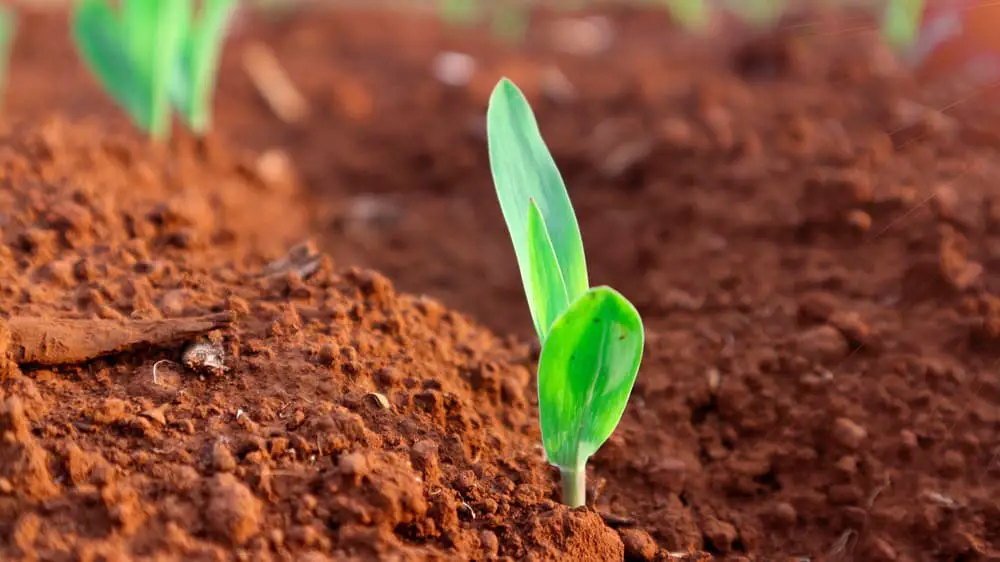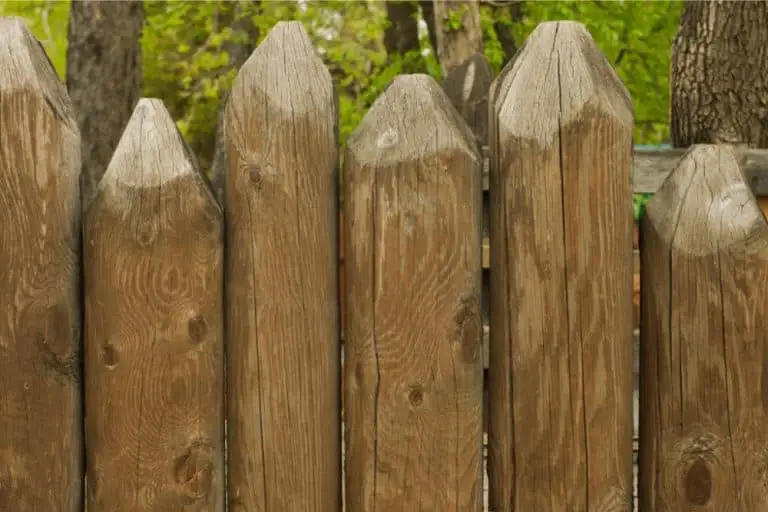How Big Should My Plants Be After 2 Weeks?
Are you wondering, How Big Should My Plants Be After 2 Weeks? Here is a quick and easy guide to all the different plants!
If you’ve ever looked after a plant in your home or garden, you’ll know that it feels like having a child to take care of!
So much can go wrong between initially planting a seed and seeing your plant grow to its full size but when everything goes right, it can be super rewarding too.
Different plants will all grow differently and reach different sizes after 2 weeks depending on the type of plant and the conditions around it.
In this article, we’ll go over how different types of growing conditions can affect the size of your plants and what the ideal size for your plant is after 2 weeks?
Related Articles:
- Grow Cucumbers Annually 2022
- How To Harvest Your Perennial Rosemary [The RIGHT Way!]
- 5 Best Hand Saw For Cutting Trees [2022 Guide]
- Philodendron Giganteum- How To Help Them THRIVE!
- Why Is My Garlic Purple? [And Is It Better Than White Garlic?]
DISCLAIMER
Some of the links on here are affiliate links and I may earn if you click on them, AT NO EXTRA cost to you. Hope you find the information here useful! Thanks.
General Rules Of Thumb
In general, you can expect a plant to grow an average of 0.8 inches to 1 inch per week. However, this figure naturally depends on a number of factors, including the type of plant, amount of sunlight, volume of water, type of fertilizer, when the seed was planted and even the temperature around the plant.
In the next section, we’ll take a look at some of the different plant varieties and how much you can expect them to grow after 2 weeks.
Annuals
Plants known as ‘annuals’ get their name from the fact that they will complete their entire life cycle in one year. Some annuals can produce beautiful, bright flowers in the summer. They also include crops like watermelon, maize and durum.
It’s also worth noting that, whatever type of annual plant you’re growing, it will likely grow faster than most other plant types in your garden.
Unfortunately, because there’s such a wide variety of annual plants, there isn’t really a definitive answer for how big they should grow over 2 weeks. For example, a watermelon will grow in a completely different way to a marigold flower, but they’re both annuals!
For this reason, it’s more important to keep a note of how healthy your plant looks as it grows. The general rule of around 1 inch of growth per week is still a good guide of your plant’s health.
However, a better indicator is looking at the colour and shape of the plant. If the stalk has some brown or grey spots on it and looks too thin and long, it might indicate that the plant needs more sunlight and water.
A handy tip for keeping your annual flowers looking good is pinching off a couple of inches from the top of the plant while it’s growing. This encourages your plant to branch out and will end up looking bushier, rather than long and thin.
kKeep your annuals maintained by giving them high-quality organic fertilizers

Note– If you want to make your green fingers happier and your life easier, you can use this affordable 83 pieces ultimate gardening set to help you garden like a pro!
Perennials

Perennials are similar to annuals, as they are named after their average lifespan. However, perennials can live for 3 years or more from a single seed, meaning they’ll stay pretty tough all year round.
You’ll typically see perennials flower in the summer over a few months, but in the winter, certain perennials known as ‘hardy perennials’ can often ‘disappear’ to protect themselves from the cold months in winter.
This doesn’t mean they’ve died, though. The foliage above ground will fade away but the roots and stalk underground will lie in wait for the hotter weather to return.
‘Half hardy perennials’ aren’t as tough and they’ll need to be potted and taken inside during winter to keep them alive. That’s why it’s important to research what type of plant you have while taking care of it.
That’s why it’s, again, impossible to say how big perennials should be after 2 weeks. Over winter, you can expect growth to be stunted, or for your plant to completely shrink!
However, a few weeks after planting a perennial, and as long as there’s good weather around them, a growth of around 2 inches over 2 weeks is normal.
A Coreopsis and a Siberian Iris are both good examples of perennials that will grow slowly and require less maintenance.
A Lily-of-the-Valley and a Hardy Geranium are examples of flowers that will both grow much more quickly, meaning you’ll be able to see their beautiful flowers sooner after planting them.
Evergreens
Evergreens are shrubs that are pretty commonly found in most people’s gardens without them even realizing it!
The rate of growth for evergreens will differ depending on the type but regardless of type, these are some slow-growing plants.
The most obvious difference between types of evergreen shrubs is what maximum size they’ll eventually grow to. The height difference for varieties of evergreen shrubs can be between 18 inches and over 12 feet!
That’s why it’s important to research what the eventual height of your evergreen shrub will be, to ensure it suits your garden with minimal maintenance and trimming required.
Some of the fastest-growing evergreens are the Eastern white pine and the green giant arborvitae, which can both grow around 0.9 inches in 2 weeks.
Alternatively, a slower-growing evergreen like a holly hedge might only grow 0.02 inches in 2 weeks.
For wild and messy shrubs and hedges, use a hedge trimmer to achieve neat looking sculpted hedges.

Trees
As you’ve probably seen all around you, trees are some of the largest plants you can grow. There’a a huge range of different species of tree that you can grow in your garden and some of them are even considered evergreens.
There are already set categories of tree growth, split into groups of slow-growing trees, medium and fast. A slow growing tree will add less than 12 inches to its height every year, a medium will grow 13-24 inches and a fast grower can grow over 25 inches.
This means that, depending on the species of your tree, you could expect to see a growth of 0.5 inches after 2 weeks or even over 1 inch in the same timeframe.
Therefore, as with every plant type we’ve looked at, there is no definitive answer to how big your plant should be after 2 weeks, it all depends massively on the type of plant you’re growing.
Tree grafting is a much faster method to have fruiting trees. It can save you almost 2 – 3 years of growing time. You can get started with a tree grafting kit and you’ll be grafting like there’s no tomorrow!

Houseplants
Houseplants can be very tricky to take care of. They often won’t have the same natural strength that outdoor plants do, so it’s important to research how to maintain and care for a houseplant even before planting it.
For this reason, there’s also a vast difference in the rates that each houseplant will grow at. Within the first 2 weeks, you probably won’t see much development above the ground because the plant will need to develop a solid root base first.
However, after 2-4 weeks, you might see the stalk starting to extend out of the soil and develop some branches and buds.
Because there are even different classifications of houseplant, it’s impossible to say how much a houseplant should grow after 2 weeks. Therefore, sticking to the general rule of 0.8 Inches to 1 inch per week is a good indicator of how well an indoor houseplant is growing.
Consider using a seed germination kit to increase the success of your plants’ germination rate under optimal conditions

There you have it, a quick and easy guide to your question: How Big Should My Plants Be After 2 Weeks?. If you need more information, we have also provided a video for you below!



![27 Companion Plants For Basil, The Best and Worst! [2023]](https://aboveandbeyondgardening.com/wp-content/uploads/2022/10/Companion-plants-for-basil-768x512.jpeg)
![13 Yarrow Companion Plants & What To Avoid! [2023]](https://aboveandbeyondgardening.com/wp-content/uploads/2022/10/Yarrow-Companion-Plants-11-768x510.jpg)
![Companion Planting For Chamomile: 9 Plants [2023]](https://aboveandbeyondgardening.com/wp-content/uploads/2022/11/companion-planting-chamomile-768x512.jpg)

